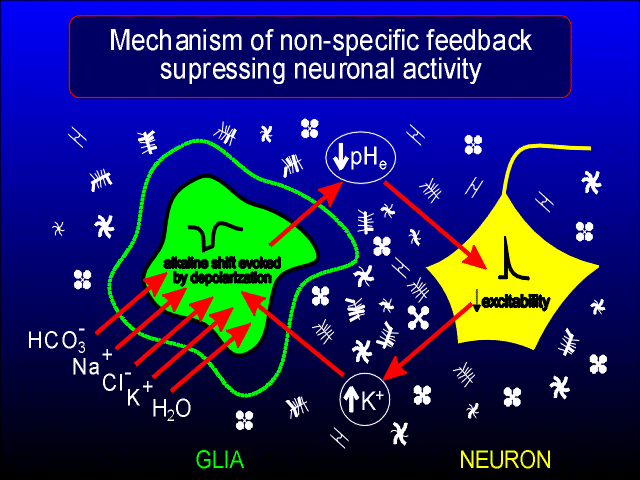
The origin, mechanisms and pathophysiological significance of ionic changes in the extracellular space
Studies at the Department have revealed that the ECS is an important communication channel, whose ionic and chemical composition, size and geometry depend on neuronal activity and glial cell function. Ion-selective microelectrodes (ISM) are used to measure the activity of biologically important ions in nervous tissue. Experiments employing K+-, pH- and Ca++- ISMs have revealed that transmembrane ionic fluxes during neuronal activity and pathological states result in transient changes in CNS extracellular space ionic composition. Glial cells play an important role in K+ and pH homeostasis, buffering any excessive rise in extracellular K+ and alkaline shifts resulting from neuronal activity.

Schematic of the mechanism of nonspecific feedback suppressing neuronal excitability. Active neurons release K+, which accumulates in the ECS and depolarizes glial cells. This causes an alkaline shift in glial pHi and an acid shift in pHe. Extracellular acidosis further suppresses neuronal activity. Transmembrane ionic movements result in glial swelling, an ECS volume decrease and therefore in a greater accumulation of ions and neuroactive substances and crowding of molecules of the extracellular matrix in the ECS.